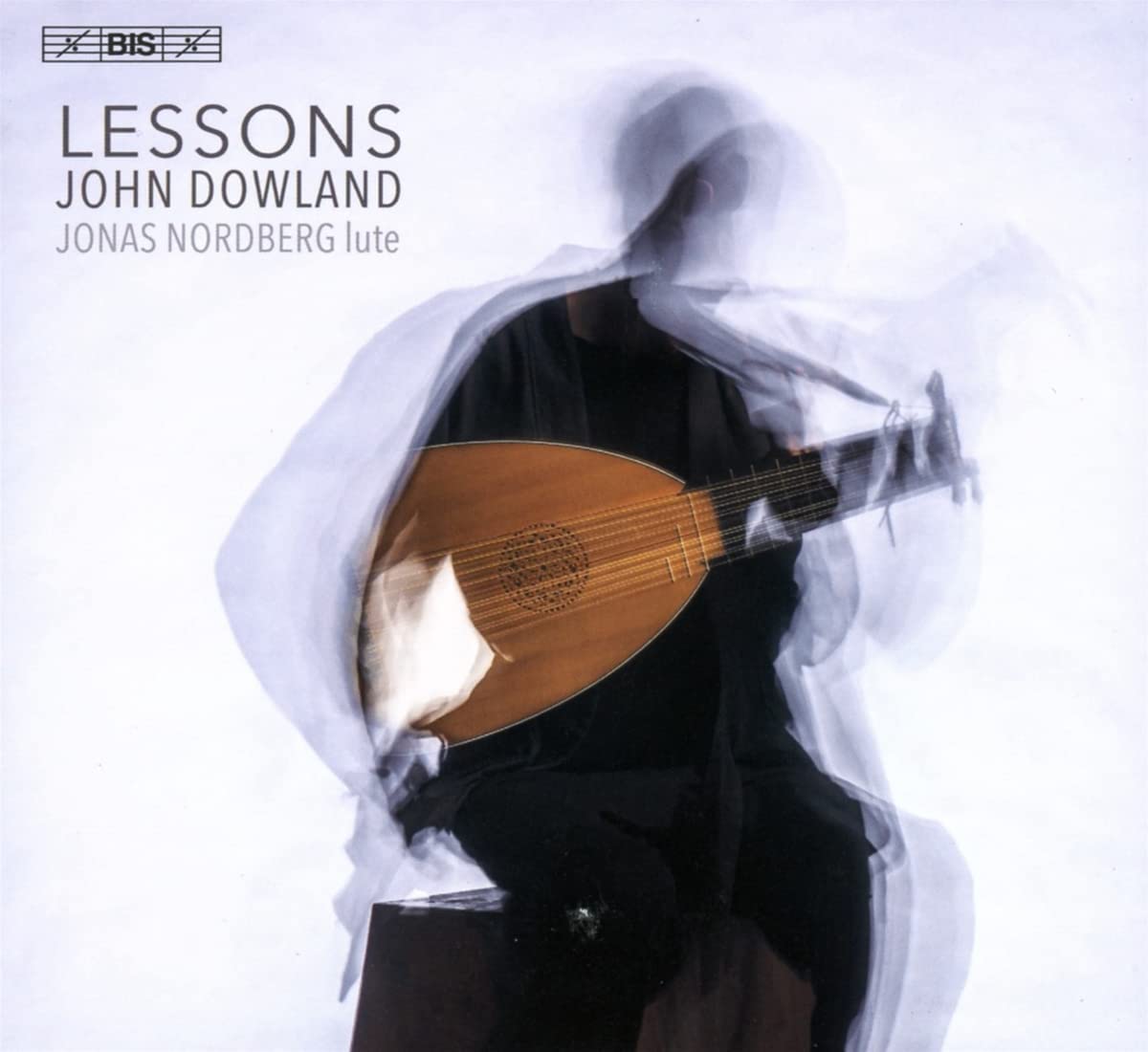Jonas Nordberg lute
72:14
BIS-2627 | SACD
From the first few notes of this CD it is clear that Jonas Nordberg sets out to put his own gloss on well-known music by John Dowland (1563-1626). He begins with Dowland’s Prelude, playing at quite a slow speed, taking liberties with the rhythm, adding a few more ornaments than were in the unique source (Margaret Board’s lute book), and exaggerating the briskness of repeated high notes towards the end. There follows A Fancy (Poulton 73) which opens with a theme similar to “All in a Garden Green”, and develops many contrasting musical ideas – little four-note rising scales overlapping each other, the introduction of a new theme which shares the first four notes of the opening theme, more rising scales but with a quaver followed by six semiquavers, a lengthy tremolo passage, and rounding off with Dowland’s characteristic alternation of tonic and dominant chords before the final grand 6-note chord. Nordberg wisely does not add a chord at the end of bar 19 as suggested by Diana Poulton, since this would interfere with the theme reiterated in the bass.
For The Frog Galliard Nordberg creates a gentle mood, perhaps thinking of the words “Now oh now I needs must part”. However, those words, supposedly for the Duc d’Alençon leaving Queen Elizabeth after a failed courtship, were probably loaded with sarcasm, and a happier mood might have been more appropriate. Who is to say? One thing I do like about Nordberg’s performance of this piece is his ornaments of which there are many. Some match Poulton’s edition, no. 23a, others are his own, but they are all most convincing. It is Nordberg’s use of ornaments and imaginative little touches of his own, which bring Dowland’s music to life.
A good example of Nordberg’s little touches comes at the end of Lady Hunsdon’s Puffe. There is a rising scale in parallel tenths, where each note of the treble is followed by a note a third higher before moving on to the next tenth; this means that the treble has a succession of rising thirds in quavers. On the repeat Nordberg introduces a fast passing note between each of these thirds – such a simple idea, but a pleasant surprise which put a smile across my face.
The title of the CD is Lessons, meaning pieces to be learned. Nordberg gives a good account of five pieces from Robert Dowland’s Varietie of Lute-lessons (1610): Galliards for Queen Elizabeth, the King of Denmark, and the Earl of Derby, John Smith’s Almain, and Fantasie (Poulton 1a).
An important aspect of English music at this time, whether for lute, virginals or other instruments, was the writing of variations on simple folk melodies. Dowland’s variations on “Loth to depart” are a fine example of this, with a wealth of musical ideas displaying the expressive capabilities of the lute. In contrast is Dowland’s simple setting of Orlando Sleepeth, which is a short piece with no ornaments or decorated repeats. Nordberg plays it through with some decoration of his own, and then again with more embellishment.
For Solus cum Sola Diana Poulton used the setting in the Ewing lute book, but Nordberg instead turns to the setting in Cambridge University Library, Dd.2.11. The last strain appears only once in the manuscript, so Nordberg repeats it with his own tasteful additions. In another pavan, Semper Dowland Semper Dolens, Nordberg creates a suitable melancholic mood, but I am puzzled by the penultimate chord of the second strain. The Ewing lute book has d’ and b, and the Weld lute book has f’ and d’. Either is fine, but Nordberg plays f’ and b creating a diminished fifth, which cannot be right.
Nordberg plays a nine-course lute strung in gut, with a string-length of 65 cm tuned to g’ at A=392. It was built by Lars Jönssen. In modern times it has been common to tune lutes to g’ at modern pitch (A=440), which requires a smallish lute with a string-length of 60 cm, and which can sound a bit tinkly. Nordberg’s larger lute is effectively tuned a tone lower, giving a richer, warmer sound, which is ideal for Dowland’s lute solos.
The number seven and multiples of seven seem to have been important for Dowland. There are 21 songs in three of his four printed collections of songs (The Second Booke has 22), 21 instrumental pieces in Lachrimae [1604] of which the first seven pavans are seven different Lachrimaes, and 42 lute solos in Varietie of which there are seven of each of the six genres represented. His setting of “Loth to depart” consists of seven variations. Significantly Robert Nordberg’s CD has 21 tracks.
Stewart McCoy
